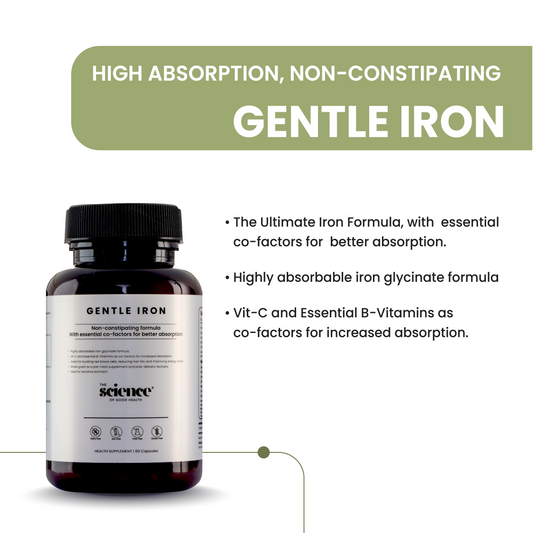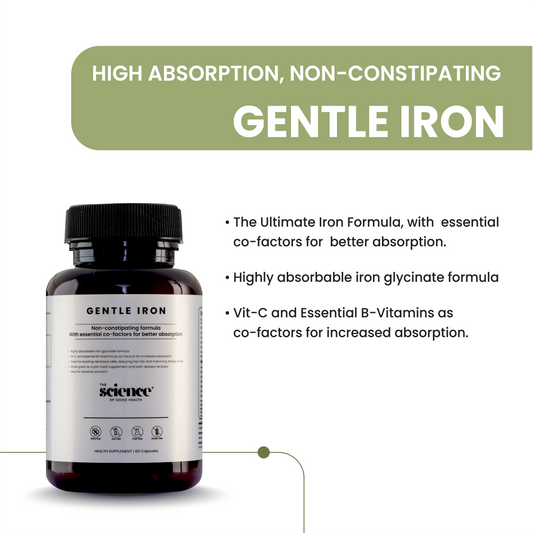If you’ve ever asked yourself when to take creatine monohydrate, you’re not alone. Creatine is one of the most researched and effective supplements for building strength, improving athletic performance, and supporting overall health. While some people focus on exact timing, research shows that consistency in daily intake is the real key.
In this comprehensive guide, we’ll cover everything you need to know about when to take creatine monohydrate. From morning and evening timing to pre- and post-workout benefits, proper dosage, myths, and expert tips, this article will give you the tools to maximize results. By the end, you’ll also discover why The Science of Good Health Creatine Monohydrate is an ideal choice for daily supplementation, helping you achieve long-term health and performance benefits.
What is Creatine Monohydrate?
Creatine is a naturally occurring compound produced by the body and also found in foods like red meat and fish. It plays a critical role in the production of adenosine triphosphate (ATP), the primary energy source for short bursts of high-intensity exercise.
Among the various forms of creatine, creatine monohydrate stands out as the most studied and effective. Its purity, safety, and proven effectiveness have made it the gold standard for athletes, bodybuilders, and fitness enthusiasts.
Understanding when to take creatine monohydrate ensures that your muscles remain saturated with this essential compound, allowing you to reap the full benefits of increased energy, strength, and recovery.
Benefits of Creatine Monohydrate
Creatine monohydrate provides a wide array of benefits for anyone looking to improve fitness, performance, or overall health. Here’s how it can help:
-
Boosts Muscle Strength and Power: Creatine increases ATP production, giving your muscles more energy for lifts, sprints, and high-intensity exercise.
-
Enhances Athletic Performance: It improves performance during short, explosive movements like weightlifting, HIIT, and sprinting.
-
Aids Muscle Recovery and Growth: Helps muscles repair faster and stimulates protein synthesis for long-term growth.
-
Supports Brain Health and Cognitive Function: Research suggests creatine may improve memory, focus, and overall mental performance.
-
Promotes Overall Wellness: Useful for older adults and women, including those in perimenopause or menopause, to preserve lean muscle mass and maintain strength.
Knowing when to take creatine monohydrate can make these benefits more noticeable by ensuring your muscles have adequate creatine stores at all times.
The Big Question: When to Take Creatine Monohydrate
One of the most common questions is when to take creatine monohydrate. Timing can influence energy availability, recovery, and performance, but it’s important to remember that consistent daily intake outweighs exact timing. Here’s a detailed breakdown:
Morning vs. Evening
-
Morning: Taking creatine in the morning with breakfast can boost energy levels for the day and help you stay consistent with supplementation.
-
Evening: Evening intake works for those who train later. Creatine does not have stimulating properties, so it won’t interfere with sleep.
Pre-Workout
-
Taking creatine before exercise may slightly improve performance during high-intensity workouts by providing extra ATP energy.
-
Pre-workout creatine is particularly beneficial for those doing strength training, sprints, or short bursts of explosive activity.
Post-Workout
-
Post-workout intake helps replenish creatine stores and aids muscle recovery.
-
Combining creatine with protein and carbohydrates after training can enhance absorption and muscle glycogen replenishment.
Consistency Over Timing
-
Studies consistently show that daily creatine intake is more important than whether it is taken pre- or post-workout.
- For long-term benefits, sticking to a regular schedule ensures that your muscles stay saturated with creatine.
Dosage and Phases
Understanding dosage is essential when deciding when to take creatine monohydrate. There are two main phases:
-
Loading Phase (Optional):
-
Take 20 grams per day split into 4 doses for 5–7 days.
-
Rapidly saturates muscles with creatine, but not necessary for everyone.
-
Take 20 grams per day split into 4 doses for 5–7 days.
-
Maintenance Phase (Recommended):
-
Take 3–5 grams per day consistently.
-
Ideal for sustaining performance, recovery, and muscle growth.
-
The Science of Good Health Creatine Monohydrate offers a convenient 3g serving, perfect for daily use.
-
Take 3–5 grams per day consistently.
By following these phases, you ensure your muscles have optimal creatine levels, regardless of whether you take it in the morning, pre-workout, or post-workout.
Who Should Take Creatine Monohydrate?
Creatine is not just for bodybuilders. Here’s who can benefit from knowing when to take creatine monohydrate:
-
Strength athletes, bodybuilders, and sprinters looking to maximize performance.
-
Individuals with active lifestyles who want better endurance, strength, and recovery.
-
Men and women wanting to preserve lean muscle during aging or lifestyle changes.
-
Older adults seeking muscle and cognitive support to maintain overall wellness.
No matter your fitness level or age, proper creatine intake can support both performance and long-term health.
Common Myths About Creatine
Many misconceptions surround creatine supplementation. Let’s address the most common myths:
-
Myth: Creatine is only for bodybuilders.
Reality: It benefits anyone engaging in physical activity or seeking muscle maintenance.
-
Myth: Creatine damages kidneys.
Reality: Research confirms creatine is safe for healthy adults when taken at recommended doses.
-
Myth: Creatine must be cycled.
Reality: Long-term, daily supplementation is safe and effective.
-
Myth: Timing is critical.
Reality: Daily consistency matters more than whether you take it pre- or post-workout.
Understanding the facts helps you confidently decide when to take creatine monohydrate for optimal results.
Tips for Maximizing Creatine Results
To make the most of your supplementation, consider these tips:
-
Stay Hydrated: Creatine draws water into muscles; drinking sufficient water is essential.
-
Combine with Strength Training: Exercises like lifting and resistance training enhance creatine’s benefits.
-
Pair with Carbohydrates or Protein: Post-workout intake with food improves absorption and muscle recovery.
-
Choose Pure, High-Quality Creatine: Avoid fillers or flavored powders. The Science of Good Health Creatine Monohydrate is pure, unflavored, and easy to mix, making it convenient to stay consistent.
Following these tips ensures you get the most out of your daily creatine intake, regardless of when you take creatine monohydrate.
Why Choose The Science of Good Health Creatine Monohydrate?
-
Pure 3g Dose: Perfect for daily maintenance without overloading.
-
Easy to Mix: Dissolves quickly in water, shakes, or juice.
-
Research-Backed Formula: Supports strength, endurance, recovery, and brain function.
-
Third-Party Tested: Verified for quality and purity.
-
Suitable for Everyone: Ideal for athletes, fitness enthusiasts, and those looking to maintain overall wellness.
Using The Science of Good Health Creatine Monohydrate makes it simple to stick to a consistent schedule, which is the most important factor when deciding when to take creatine monohydrate.
Conclusion
So, when it comes to when to take creatine monohydrate, the most important rule is consistency. Whether you choose morning, pre-workout, or post-workout, sticking to a daily routine ensures your muscles stay saturated and ready for performance. Beyond workouts, creatine supports long-term muscle growth, strength, recovery, and cognitive health.
Unlock your full potential with The Science of Good Health Creatine Monohydrate. Pure, potent, and research-backed, it’s designed for athletes, fitness enthusiasts, and anyone looking to maintain long-term wellness.
Shop Now & Take Control of Your Strength & Wellness →
Read Our latest Blogs:
Creatine Before or After Workout | Creatine Rich Foods | Foods that Contain Creatine | Is Creatine a Steroid | Which Creatine is Best | Creatine Weight Gain | Natural Sources of Creatine | When Should I Take Creatine | Can I Take Creatine with Milk | How to Use Creatine Monohydrate | Whey Protein with Creatine
Frequently Asked Questions
Q1. When is the best time to take creatine monohydrate?
Ans: Daily consistency is most important. Pre- or post-workout intake can offer slight performance and recovery benefits, but the key is never missing a dose.
Q2. Do I need a loading phase for creatine monohydrate?
Ans: No, the loading phase is optional. Taking 3–5 grams daily is sufficient to maintain muscle creatine levels over time.
Q3. Can women take creatine monohydrate?
Ans: Yes, women can benefit from creatine just like men. It supports strength, endurance, and overall muscle health.
Q4. Will creatine cause water retention?
Ans: Mild water retention in muscles is normal and temporary, often considered a positive sign that creatine is working.
Q5. Can creatine be taken with other supplements?
Ans: Yes, creatine pairs well with protein shakes, carbohydrates, or other supplements for improved absorption.
Q6. Is creatine safe for older adults?
Ans: Absolutely. Creatine can help maintain muscle mass, strength, and cognitive function in older adults.
Q7. Do I need to cycle creatine monohydrate?
Ans: No cycling is required. Long-term daily supplementation is safe and supported by research.
Q8. How should I mix creatine monohydrate?
Ans: Mix it with water, juice, or protein shakes. The Science of Good Health Creatine Monohydrate dissolves easily, making it convenient to take consistently.






